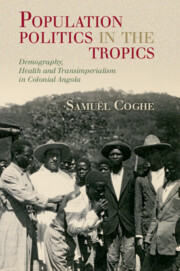Book contents
- Population Politics in the Tropics
- Global Health Histories
- Population Politics in the Tropics
- Copyright page
- Dedication
- Contents
- Maps
- Figures
- Tables
- Acknowledgements
- Note on the Spelling of Proper Names
- Introduction
- 1 Sleeping Sickness, Depopulation Anxieties and the Emergence of Population Politics
- 2 Tropical Medicine and Sleeping Sickness Control Before 1918
- 3 Introducing Social Medicine: Inter-Imperial Learning and the Assistência Médica aos Indígenas in the Interwar Period
- 4 Re-assessing Population Decline: Medical Demography and the Tensions of Statistical Knowledge
- 5 Saving the Children: Infant Mortality and the Politics of Motherhood
- 6 The Problem of Migration: Depopulation Anxieties, Border Politics and the Tensions of Empire
- Conclusion
- Epilogue: Demography and Population Politics, 1945–75
- Bibliography
- Index
3 - Introducing Social Medicine: Inter-Imperial Learning and the Assistência Médica aos Indígenas in the Interwar Period
Published online by Cambridge University Press: 20 January 2022
- Population Politics in the Tropics
- Global Health Histories
- Population Politics in the Tropics
- Copyright page
- Dedication
- Contents
- Maps
- Figures
- Tables
- Acknowledgements
- Note on the Spelling of Proper Names
- Introduction
- 1 Sleeping Sickness, Depopulation Anxieties and the Emergence of Population Politics
- 2 Tropical Medicine and Sleeping Sickness Control Before 1918
- 3 Introducing Social Medicine: Inter-Imperial Learning and the Assistência Médica aos Indígenas in the Interwar Period
- 4 Re-assessing Population Decline: Medical Demography and the Tensions of Statistical Knowledge
- 5 Saving the Children: Infant Mortality and the Politics of Motherhood
- 6 The Problem of Migration: Depopulation Anxieties, Border Politics and the Tensions of Empire
- Conclusion
- Epilogue: Demography and Population Politics, 1945–75
- Bibliography
- Index
Summary
In the 1920s, the colonial health services in Angola intensified the campaign against sleeping sickness. In 1923, two anti-sleeping sickness missions were sent to the Congo (1923–6) and Zaire (1923–4) districts.1 Most importantly, in 1926, the fight against this paradigmatic disease became part of a more comprehensive and well-funded scheme of Assistência Médica aos Indígenas (AMI) or ‘Native Medical Assistance’. The basic concept and terminology of this scheme, which aimed to provide basic healthcare to ‘native’ populations through an expanding network of small hospitals and maternity clinics, with the help of medically trained African auxiliaries, reached back to the late 1890s, when it was first put into practice in French Madagascar. Later, it was adopted in French Indochina, AOF and AEF as well, but coverage remained very limited before the 1920s.2 In Angola, Governor-General Norton de Matos had tried to set up an AMI scheme in 1914, but failed due to lack of personnel and money.3 Beyond anti-sleeping sickness and anti-smallpox campaigns, biomedical healthcare had remained limited to Europeans and Africans living in or close to the biggest towns.4 This only began to change in 1926, when the newly established AMI services started to provide basic healthcare to Angolan populations in some rural areas.
- Type
- Chapter
- Information
- Population Politics in the TropicsDemography, Health and Transimperialism in Colonial Angola, pp. 109 - 145Publisher: Cambridge University PressPrint publication year: 2022



